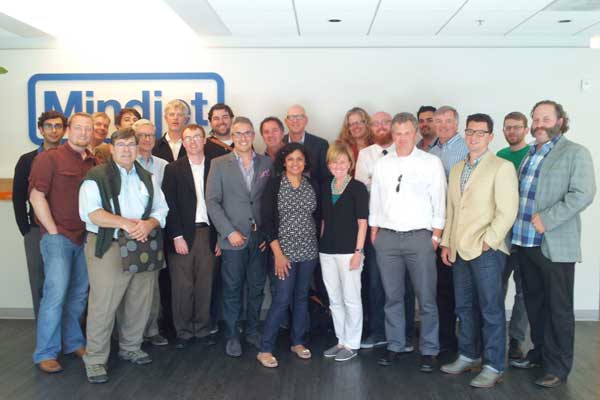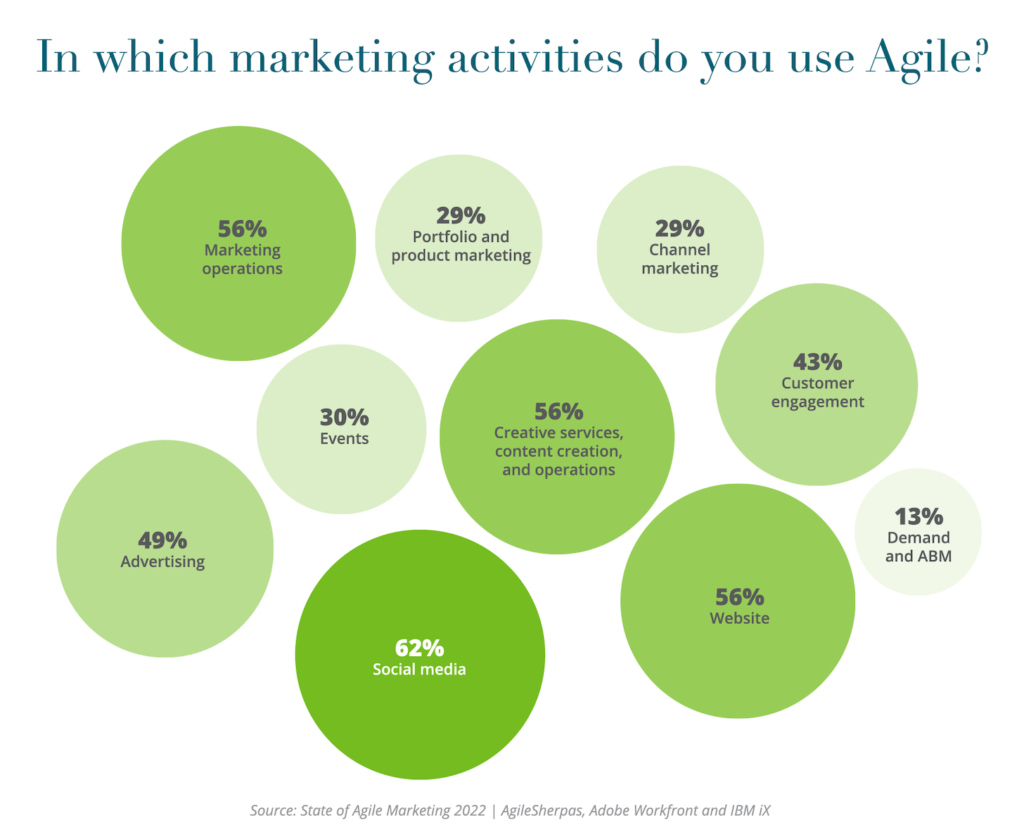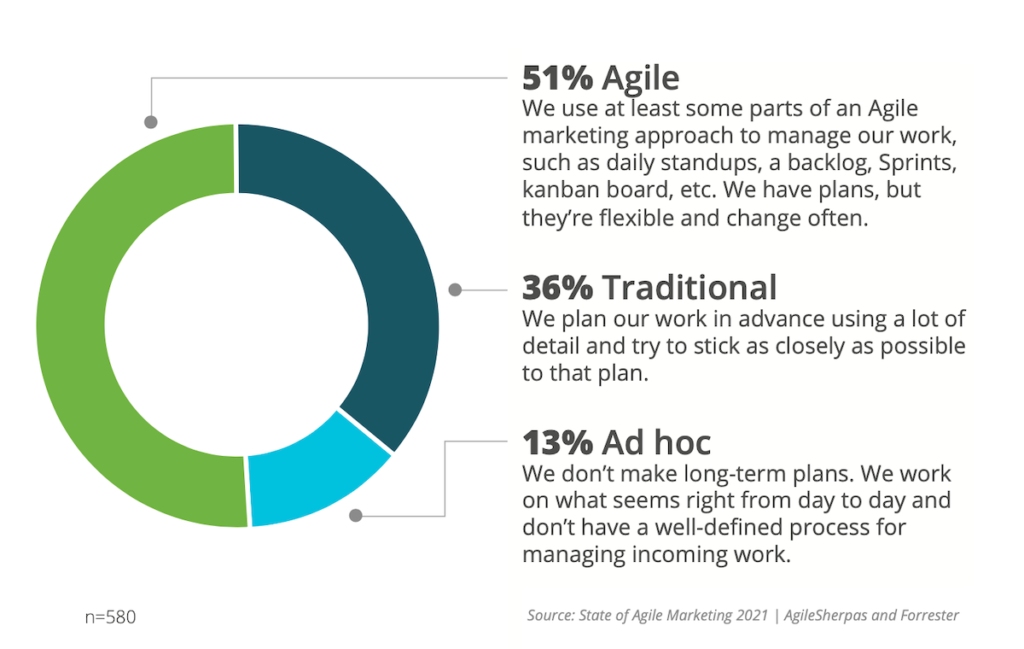Sometimes an idea is just ready to happen and is simultaneously discovered by multiple people at once. A famous example is when Newton and Leibniz independently invented calculus.
Another is agile marketing. Some years ago, after agile software development had gained significant momentum, several different marketing leaders independently realized, “Hey, this agile approach might work in my department…”
And agile marketing was born.
Jascha Kaykas-Wolff, now the CMO of Mindjet, was one of those early innovators and has been an enthusiastic champion of agile marketing ever since. The first agile marketing event, SprintZero, was actually held at Mindjet’s headquarters in San Francisco last year.
He has written extensively about agile business on Mindjet’s blog, and has put together a number of terrific agile marketing SlideShare presentations (several of which are included below).
I’ve been meaning to publish a Q&A with Jascha for a long time, and so I’m very happy that we caught up recently, and he agreed to share his thoughts on the following questions.
Can you tell us a little about your background and your current mission at Mindjet?
I love marketing because it’s the perfect home for people like me. I started my career in business development at Yahoo! and then moved to program/product management at Microsoft. Both areas of focus, where I was able to comfortably retreat to my analytical comfort zone to be effective in my roles.
While starting a team that evolved into what is now Microsoft Store, I took responsibility for marketing and, because I didn’t know any better, I applied all my learnings from being attached to revenue and building products into the way we worked.
I’ve been incredibly fortunate to have been able to build and grow teams at some amazing companies like Webtrends and Involver (now a part of Oracle) and for the last couple of years have been working tirelessly to bring brainstorming, personal productivity and innovation to top of mind for executives and knowledge workers in the Fortune 1000.
At Mindjet my mission is simple:
- Build upon a wonderful brand with a highly outspoken customer base.
- Establish Mindjet as a leading company delivering a repeatable process for innovation to our customers.
- Contribute meaningfully to the bottom line of the business through marketing.
- Be a best in class customer and advocate of our products.
You have been one of the early pioneers and long-term advocates of agile marketing. How did you get started with it? How did that evolve?
During my time at Microsoft I was fascinated at the evolving nature of the way that our engineering teams worked. I joined Microsoft from a pure play internet company (Yahoo!), and the collision of waterfall and agile workflows played out right in front of me as classically trained Microsoft engineers started joining teams that deployed their software straight to the web. Incredibly talented people were failing, and it was because of the rigidity of their processes, not their abilities.
Incredibly talented people were failing, and it was because of the rigidity of their processes, not their abilities.
Marketing was run analogous to the big engineering teams that had perfected the waterfall model and were shipping products like Windows. It seemed logical to apply some of the same agile tactics operationally to marketing. It was a bit of a lark back then in the mid 2000’s, but it worked and I haven’t turned back. Early on, I celled to system iterative marketing, and as agile grew to prominence in engineering and product, it made sense to call it was it actually was: agile marketing.
Over the years I’ve learned — along with the teams I’ve been fortunate enough to work with — to adapt the system fully to marketing. We share nearly all the same structure as traditional Scrum but have adapted the product owner position to suit the organizational structure we’ve build, and we aren’t as religious about physically standing up in the stand-ups.
What do you think are the similarities and differences between agile marketing and agile development?
The similarities are at the core of the value in the system. The strategy you define as a business is best represented in the work you are doing and where your resources are placed.
Agile marketing and development systems allow for the clearest and truest organization of priorities against your strategy through the transparency of the backlogs and acceptance of user stories. The agile system, in my opinion, helps teams fundamentally communicate better.
The agile system, in my opinion, helps teams fundamentally communicate better.
In all honesty the only difference is the output. Engineering teams deliver code and marketing doesn’t although, as you know, that’s hardly a distinction that every company could call out.
What were some of the challenges you faced with agile marketing along the way, and how did you overcome them?
In retrospect, the biggest challenges have been with introducing the system to teams that are dependent on marketing, like sales or even the executive staff.
Agile, coming from marketing, is foreign at first. However, the agile system — and specifically the “share day,” where you bring the team together to retrospective the sprint — are amazing communication tools. Our sales leadership team and the executive staff come to every share day and that provides them with great insight into the work the team is doing, performance, and gets everyone emotionally bought in.
If a CMO likes the sound of this and wants to get started with agile marketing, how would you recomend they begin?
Research! Unlike a few years ago there is a huge amount of content published on getting started using agile processes in marketing. A year ago I published a short slideshare that articulates a quick path to getting started.
I propose three steps:
- Start Small. DO select one project. DON’T create a sprint.
- Make it Cross-Functional. Pick a project that has lots of traditional handoffs (e.g., writer, designer, developer). Landing page, SEM target. Nurture campaign.
- Create muscle memory. Overuse the standup. Facilitates acceptance of the process. Nothing will help you move through challenges culturally or practically like seeing each other and explicitly focusing on what is being done.
You only need one strong success emotionally to get the team excited about the process reorganization into agile.
Aside from agile marketing, what are some of the other structural or managerial changes you believe that marketing departments should undertake to keep modern?
The top-down, command and control organizational models aren’t working anymore. Organizational design and restructuring is not new. But with the requirement to create data-driven marketing organizations and support marketers who show bottom line results, more emphasis is being placed on marketing leaders to structure their teams and business in a way that is agile and impactful.
Over the past several years, I’ve been fortunate to lead marketing organizations for enterprise and mid-market businesses. During this time, I’ve developed an organizational playbook that can scale to virtually any size of business, is highly adaptable, and has a proven track record for success. I believe that all marketing teams should be considering their structure moving forward.
If that sounds interesting, you can see more details here:
Many people say that modern marketing is both an art and a science. Do you agree with that? If so, what’s the art, and what’s the science?
I do agree that marketing is science and art. I think the misconception that we deal with today, because of the abundance of data, is that science will provide a path to great marketing on its own. That’s a farce.
The art comes first as marketing is, and should always be, a “taste making” function of a business. The refinement and pivots are supported by science. The secret for me has always been to move fast out of the gate. Once you and your team are up and running, it’s virtually impossible to define where the science and art start and stop. It’s truly a symbiotic relationship.
The art comes first as marketing is, and should always be, a “taste making” function of a business. The refinement and pivots are supported by science.
Thank you, Jascha!





My work involves implementing Agile and Inbound Marketing together, specifically in a B2B marketing arena. One of the key takeaways in this has been involving sales, particularly around creating user stories and in providing insight for specific blog posts and more formal user journey development. Clients I have worked with have recognised that Agile and sales involvement brings about alignment between sales and marketing- an objective that many CEO’s have been chasing for years.
We have seen impressive results with one minor player in a market stuffed full of much more significant players gaining massively and finding themselves at the table for projects that they could only have previously dreamed of. Overall I have found that marketing has to involve themselves with sales and their activities far more, including spending time more time on customer visits in order to realise the challenges that buyers experience. And the same for sales involving themselves much more with marketing activities. Sales have also been involved in content creation more as they see the value that Agile provides in being responsive in countering newly learned competitive threat.
Agile is a behavioral change and therefore whether team is small or large benefits from executing good change management principles. We’ve always used Kotler’s 8 Step Change model which has worked well for us.